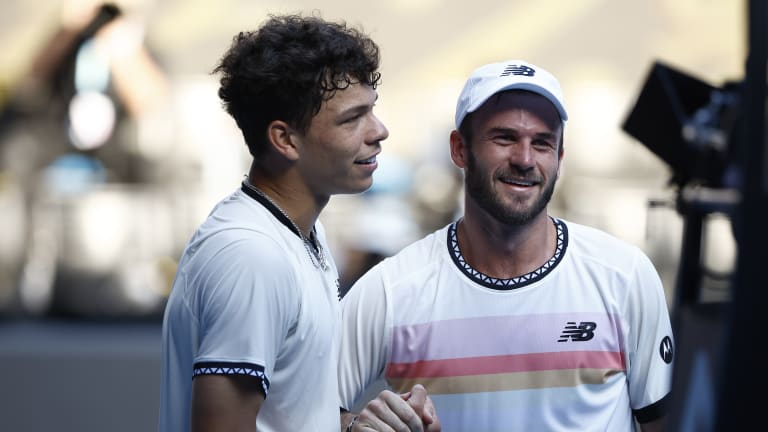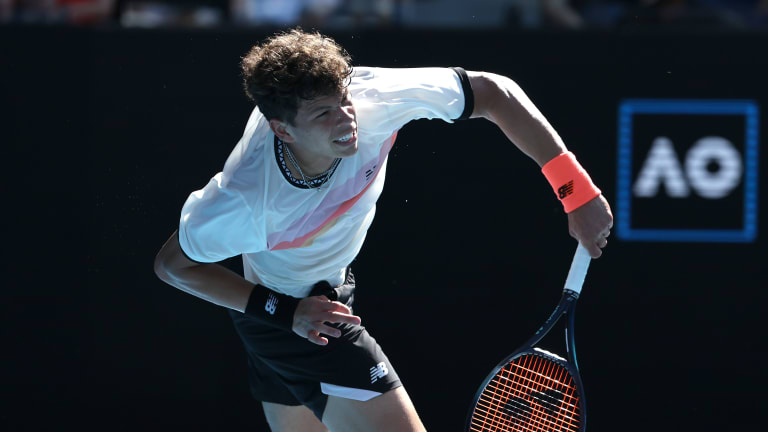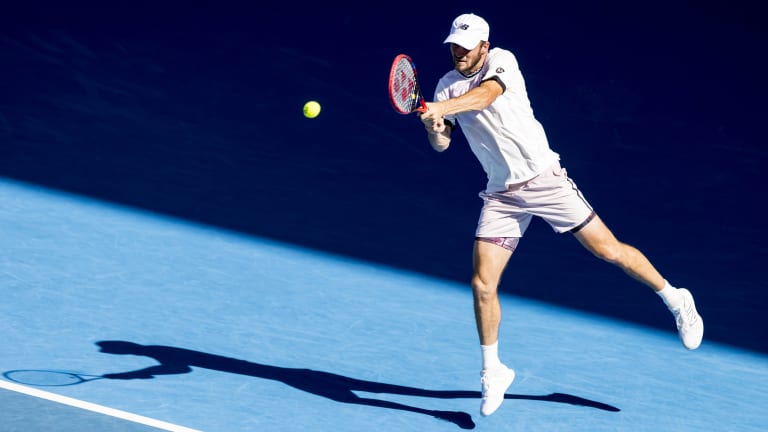Australian Open
Victorious Tommy Paul, surging Ben Shelton yet two more Americans offering major possibilities
By Jan 25, 2023Australian Open
Roger Federer to headline “Battle of the World No.1s” at Australian Open’s inaugural Opening Ceremony
By Dec 11, 2025Australian Open
Australia at Last: Reflections on a first trip to the AO
By Jan 29, 2025Australian Open
Alexander Zverev must elevate his game when it most counts—and keep it there
By Jan 27, 2025Australian Open
Jannik Sinner draws Novak Djokovic comparisons from Alexander Zverev after Australian Open final
By Jan 26, 2025Australian Open
Alexander Zverev left to say "I'm just not good enough" as Jannik Sinner retains Australian Open title
By Jan 26, 2025Australian Open
Jannik Sinner is now 3-0 in Grand Slam finals after winning second Australian Open title
By Jan 26, 2025Australian Open
Taylor Townsend and Katerina Siniakova win second women's doubles major together at the Australian Open
By Jan 26, 2025Australian Open
Madison Keys wins her first Grand Slam title at Australian Open by caring a little bit less
By Jan 25, 2025Australian Open
Henry Patten, Harri Heliovaara shrug off contentious first set to win Australian Open doubles title
By Jan 25, 2025Victorious Tommy Paul, surging Ben Shelton yet two more Americans offering major possibilities
The 25-year-old's 7-6 (6), 6-3, 5-7, 6-4 win over the 20-year-old has many enjoying the present and pondering the future.
Published Jan 25, 2023
Advertising
Advertising

“The coaches have been telling us, ‘We need new Americans, we need new Americans.’ It's kind of engraved in my head. We all want to perform.”—Tommy Paul
© Getty Images
Advertising

Shelton's serve—and entire repertoire—seems destined to be a frequent sight in tournaments. (As long as he's up for more international travel.)
© Getty Images
Advertising
Advertising

Paul's 7-6 (6), 6-3, 5-7, 6-4 win marked the second straight major in which an American man reached the semifinals.
© Icon Sportswire via Getty Images